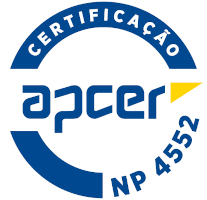2025
Wind Energy
Name: Wind Energy
Code: EME01808L
6 ECTS
Duration: 15 weeks/156 hours
Scientific Area:
Electrotechnical Engineering, Mechanical Engineering
Teaching languages: Portuguese
Languages of tutoring support: Portuguese, English
Regime de Frequência: Presencial
Sustainable Development Goals
Learning Goals
The student will:
1. Acquire knowledge regarding the origin of the wind and their time and space dependent properties.
2. Acquire knowledge and computation skills about the potential for installation of a wind farming park.
3. To become familiar with the most relevant technologies for wind energy conversion.
4. Acquire knowledge and skills for the project, dimensioning, and computation of electric power generated on a wind farm.
1. Acquire knowledge regarding the origin of the wind and their time and space dependent properties.
2. Acquire knowledge and computation skills about the potential for installation of a wind farming park.
3. To become familiar with the most relevant technologies for wind energy conversion.
4. Acquire knowledge and skills for the project, dimensioning, and computation of electric power generated on a wind farm.
Contents
1. Introduction.
a) Evolution of wind energy and environmental impacts.
2. Wind energy resource.
a) Wind energy and the energy balance at the earth surface and atmosphere.
b) Analysis of wind: Variation in time and the spectral representation. Local effects. Weibull distribution. Prandtl law. Turbulence.
c) Wind measurements and assessment of wind energy resource.
3. Wind energy conversion.
a) Available wind energy. Betz limit.
b) Power coefficient of a wind generator. Energy analysis of wind power conversion.
4. Technology.
a) Components of a wind generator.
b) Aerodynamics.
c) Power control - stall and pitch systems.
d) Electric generators - Synchronous, Induction and Doubly-Fed Induction Generators.
e) Power grid connection.
f) Vertical axis turbines and micro-generators.
a) Evolution of wind energy and environmental impacts.
2. Wind energy resource.
a) Wind energy and the energy balance at the earth surface and atmosphere.
b) Analysis of wind: Variation in time and the spectral representation. Local effects. Weibull distribution. Prandtl law. Turbulence.
c) Wind measurements and assessment of wind energy resource.
3. Wind energy conversion.
a) Available wind energy. Betz limit.
b) Power coefficient of a wind generator. Energy analysis of wind power conversion.
4. Technology.
a) Components of a wind generator.
b) Aerodynamics.
c) Power control - stall and pitch systems.
d) Electric generators - Synchronous, Induction and Doubly-Fed Induction Generators.
e) Power grid connection.
f) Vertical axis turbines and micro-generators.
Teaching Methods
The curricular unit is divided in theoretical classes for laying down the fundamental concepts and theoretical-practical classes for problem solving. Students will be required to hand-in a report for a practical assignment with either laboratory work or assessing the wind energy resource at a given location (real data on wind velocity and direction is provided).
Assessment
Assessment can be either through tests during the semester or final exam. In the case of an assessment throughout the semester, the following formula will be used for calculating the final mark:
Final mark: NF = 0.3*(NF1+NF2)+0.4*NT
Where: NF1: First Test NF2: Second Test NT: Thematic work with report
Any of these assessment components has a minimum mark of 8.0.
In the case of assessment by exam, the final mark will be the highest mark obtained:
Final mark: NF = Max(EN,ER)
Where: E1: Exam in first call E2: Exam in second call
Final mark: NF = 0.3*(NF1+NF2)+0.4*NT
Where: NF1: First Test NF2: Second Test NT: Thematic work with report
Any of these assessment components has a minimum mark of 8.0.
In the case of assessment by exam, the final mark will be the highest mark obtained:
Final mark: NF = Max(EN,ER)
Where: E1: Exam in first call E2: Exam in second call
Teaching Staff
- Ediclê de Souza Fernandes Duarte
- Paulo Manuel Ferrão Canhoto [responsible]





















